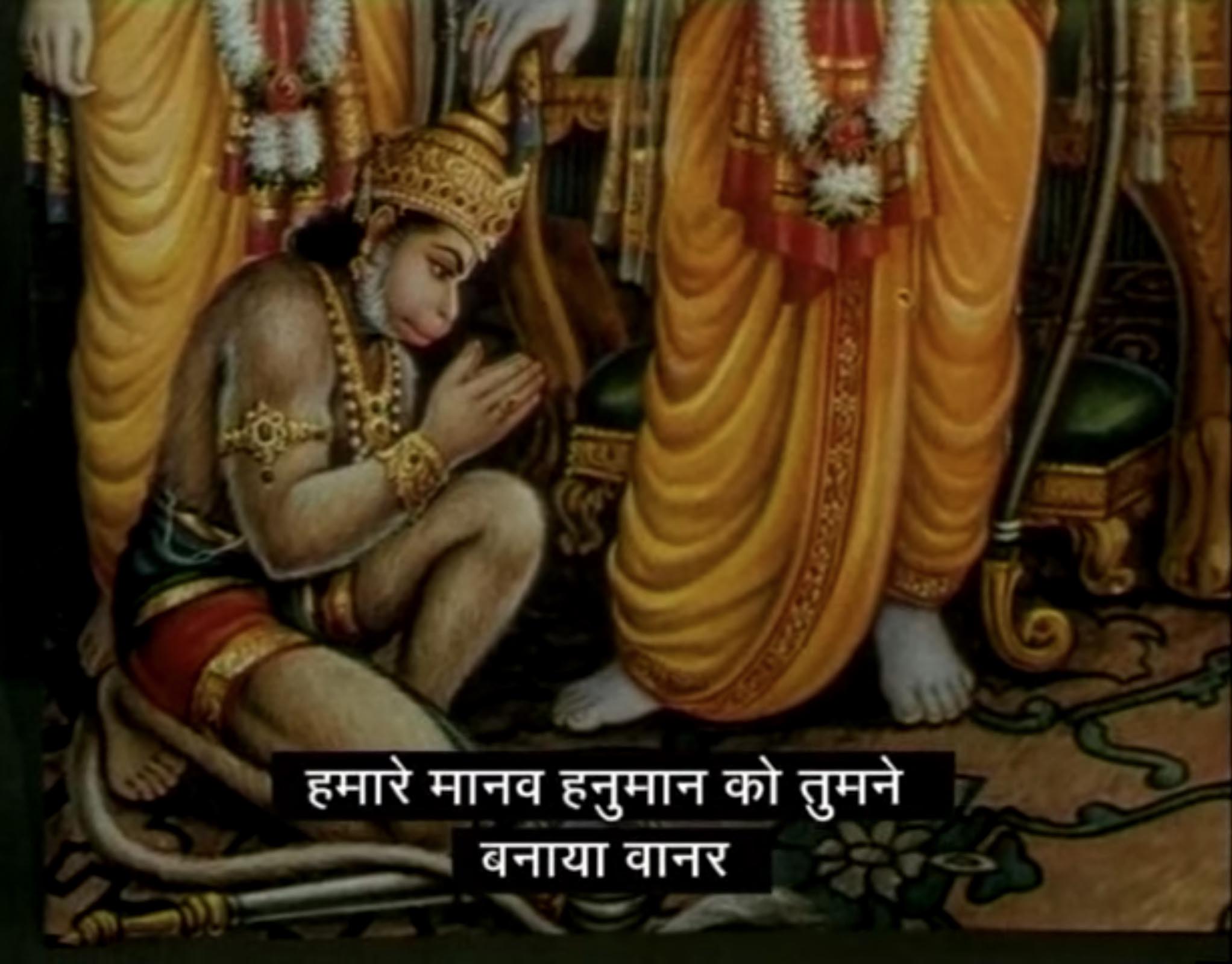A brief history of ‘USE ME’
We see the phrase ‘USE ME’ written on dustbins. Some of these dustbins are in the shape of a uniform wearing civilian monkey holding a void into which the garbage is suppossed to be thrown.

This object shows a relationship between the concept of a ‘civil monkey’ and the idea of ‘self-less servitude’ (USE ME). This relationship has an unassuming history—
In the Sanatanist reality, a sacred monkey symbolises the notion of servitude that ‘backward’ caste people are required to have for the oppressor (castes). The founding religious-myth of this notion develops from a secular epic ‘hero’ poem known to be popular in ancient India.
If we take Books II-VI of the Ramayana and leave out of consideration Books I and VII, which are admitted to be later additions, we shall see that the main substance of the poem is secular. Rama is only a good and great man, a high-souled hero, who utilised the services of the aboriginal tribes in civilising the south, and not an avatar of Visnu [a Later/Post Vedic god]. […] In the second stage […] There is an attempt to make Rama an avatar of Visnu.
—Epic Philosophy, S Radhakrishnan, Indian Philosophy Vol1
The ‘aboriginal tribes’ mentioned above, were shown as monkeys, or monkeyish-humans. While the human ‘hero’ is appropriated with the oppresor caste’s divine, the notion of ‘aboriginals who would chose the side of civilisation’ is located in the character of a servile but strong monkeyish-human[1].
Today, not in the sense of ‘aboriginal’ or ‘indegenous’ but in the sense of ‘native’ and pride in one’s motherland, the mythic anchor of the sacred monkey, sustains the propaganda which demands servitude, in service of the oppressor, who is ‘heroic and divine’.
[1] A music video made and written by Daya Pawar, Sambhaji Bhagat and Anand Patwardhan in 1993, titled “WE ARE NOT YOUR MONKEYS” asserts something similar:
![]() A still from the video.
A still from the video.
Subtitle: You showed our human Hanuman as a monkey
 A still from the video.
A still from the video. Subtitle: You showed our human Hanuman as a monkey